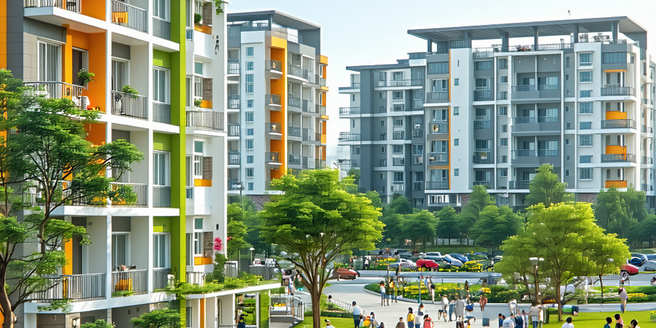Understanding Affordable Housing
Affordable housing refers to dwellings deemed adequate in quality and location, and affordable to those who are unable to afford market-priced housing within their income. It’s essential in providing stability, reducing poverty, and improving economic mobility. Governments and non-profit organizations typically collaborate to develop affordable housing initiatives, often incorporating subsidies or incentives to lower developmental costs. To effectively address housing needs, it’s crucial to consider local economic conditions, housing demand, and demographic factors. Understanding these elements helps stakeholders create projects that align with the community’s needs while ensuring long-term affordability. Equally, educating the public and stakeholders about the significance of affordable housing contributes to increased support and policy development toward sustainable housing solutions.
Criteria for Project Selection
When selecting projects for affordable housing development, several criteria are critical to ensuring the success and sustainability of the initiative. Location is prime; projects should be sited near job opportunities, schools, and public transportation to enhance convenience and accessibility for residents. The project’s alignment with local housing needs and demographic trends is another essential factor to evaluate potential success and ensure long-term viability. Financial feasibility, including funding sources and projections for cost-efficiency, must also be thoroughly assessed. Moreover, environmental impact assessments ensure that projects enhance community well-being without adverse effects on the surrounding natural environment. Community involvement throughout the selection and planning stages can also contribute to a project’s success by securing public support and ensuring the development addresses real, localized needs.
Case Study: Successful Models
Examining successful models offers invaluable insights into best practices for affordable housing projects. One notable example is the Housing First model, which provides stable housing before addressing underlying problems such as unemployment or mental health issues. This approach has led to significant positive outcomes, including reduced homelessness and healthcare costs. Another successful model comes from Vienna, Austria, where subsidized housing is integrated across socio-economic boundaries, maintaining social balance and high living standards. Mixed-income housing developments, where affordability is based on varied income levels, have also shown success in fostering diverse and sustainable communities. Analyzing these models reveals essential strategies such as integrating supportive services, collaboration with multiple stakeholders, and focusing on mixed financing schemes that can be adapted in various contexts for successful affordable housing projects.
Challenges in Implementation
Implementing affordable housing projects is fraught with challenges that necessitate comprehensive planning and adaptable strategies. One major hurdle is securing adequate funding, as these projects typically require substantial upfront capital with limited immediate financial returns. Navigating complex zoning laws and regulatory requirements also poses significant difficulties, often leading to project delays. Furthermore, community resistance or NIMBYism (Not In My Backyard sentiments) can obstruct development plans, particularly when there is a lack of communication or educational outreach. Additionally, balancing the sustainability and affordability aspects can be challenging, as eco-friendly construction methods often incur higher costs. Addressing these challenges requires multi-faceted approaches including transparent stakeholder engagement, advocacy for supportive policy frameworks, and innovative financing solutions that can take some pressures off limited public funds.
Financial Strategies and Funding
Successful financial strategies and diverse funding sources are critical components of affordable housing projects. Governments can play a pivotal role by offering tax incentives, grants, and low-interest loans to attract private developers. Public-private partnerships can also be leveraged to combine resources and mitigate risks, thus fostering innovative and cost-effective solutions. Non-profits and community land trusts can provide additional avenues for securing funding while ensuring long-term affordability by removing properties from the speculative market. Crowd-funding and social impact investing are emerging avenues that broaden investment bases and align capital with social goals. Additionally, incorporating revenue-generating components into housing projects, like retail spaces or services, can subsidize maintenance costs and create sustainable income streams. Flexible and diversified funding strategies are key to overcoming financial barriers in affordable housing development.
Future Trends in Affordable Housing
The future of affordable housing is shaped by global challenges and advancements in building technologies. Among the emerging trends, the integration of smart technologies into housing complexes is gaining traction, promising enhanced energy efficiency and reduced utility costs. Modular and prefabricated housing is becoming more common, providing cost-effective and timely construction solutions. As urban areas continue to densify, innovative designs such as micro-apartments and co-living models are being explored to optimize space usage and cater to changing demographic needs. Policies aimed at sustainability are driving the adoption of green building practices, contributing to ecological conservation while reducing long-term costs. Moreover, blockchain technology is starting to be utilized in housing transactions to ensure transparency and security. These trends indicate a promising shift towards more inclusive, sustainable, and technologically advanced affordable housing solutions.



